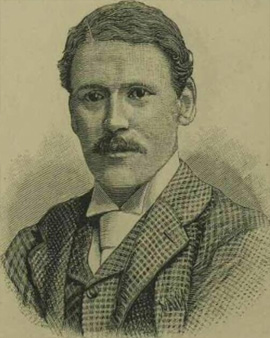


The painter William Barnes Wollen was a man who had to face the horrors of war. The young artist gained these formative experiences when he was commissioned by a London weekly newspaper in 1900 to travel to South Africa for journalistic purposes. There, together with other selected artists, he was to document the events of the Second Boer War in the form of illustrations, which were subsequently published by the newspaper. Barnes Wollen also processed the experiences of the South African Boer Battles in a short story and a series of paintings. The battle scenes created in the process, designed down to the smallest detail, transport the viewer directly into the events on the battlefield and impressively convey the unvarnished harshness of warlike conflicts. With regard to the documentation of war events, the artist is said to have thought that drawings and paintings would be a much more precise medium than photography to capture the cruelty of the battles. Likewise, Barnes Wollen painted pictures of the battles of the First World War and thematized the battles of the Anglo-Afghan wars, whereby his paintings can be regarded as a testimony to historical warfare.
Originally William Barnes Wollen, born in 1857, grew up in Leipzig, Prussia, but decided to move to England with his family. He received his artistic education at the renowned London University College School and the Slade School of Fine Arts. After successfully completing his art studies, the young painter exhibited his works almost every year at the prestigious London Royal Academy and the American National Watercolor Society. There he initially presented realistic paintings of sporting events, such as the Rugby League games, but from 1881 he began to produce paintings with military content. He not only painted contemporary battles, but also staged historical battles, such as those of the American War of Independence. He also worked as an illustrator for magazines and collaborated with the famous English novelist Arthur Conan Doyle, for whose novels and short stories he produced numerous pictures. In addition, Barnes Wollen took part with his artistic works in the Paris World Exhibition in 1889, where he was awarded a silver medal for his extraordinary achievements. However, William Barnes Wollen spent most of his artistic career in London, where he also spent the rest of his life.

The painter William Barnes Wollen was a man who had to face the horrors of war. The young artist gained these formative experiences when he was commissioned by a London weekly newspaper in 1900 to travel to South Africa for journalistic purposes. There, together with other selected artists, he was to document the events of the Second Boer War in the form of illustrations, which were subsequently published by the newspaper. Barnes Wollen also processed the experiences of the South African Boer Battles in a short story and a series of paintings. The battle scenes created in the process, designed down to the smallest detail, transport the viewer directly into the events on the battlefield and impressively convey the unvarnished harshness of warlike conflicts. With regard to the documentation of war events, the artist is said to have thought that drawings and paintings would be a much more precise medium than photography to capture the cruelty of the battles. Likewise, Barnes Wollen painted pictures of the battles of the First World War and thematized the battles of the Anglo-Afghan wars, whereby his paintings can be regarded as a testimony to historical warfare.
Originally William Barnes Wollen, born in 1857, grew up in Leipzig, Prussia, but decided to move to England with his family. He received his artistic education at the renowned London University College School and the Slade School of Fine Arts. After successfully completing his art studies, the young painter exhibited his works almost every year at the prestigious London Royal Academy and the American National Watercolor Society. There he initially presented realistic paintings of sporting events, such as the Rugby League games, but from 1881 he began to produce paintings with military content. He not only painted contemporary battles, but also staged historical battles, such as those of the American War of Independence. He also worked as an illustrator for magazines and collaborated with the famous English novelist Arthur Conan Doyle, for whose novels and short stories he produced numerous pictures. In addition, Barnes Wollen took part with his artistic works in the Paris World Exhibition in 1889, where he was awarded a silver medal for his extraordinary achievements. However, William Barnes Wollen spent most of his artistic career in London, where he also spent the rest of his life.
Page 1 / 4






